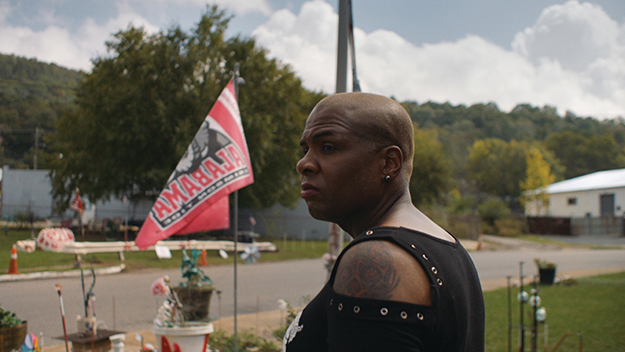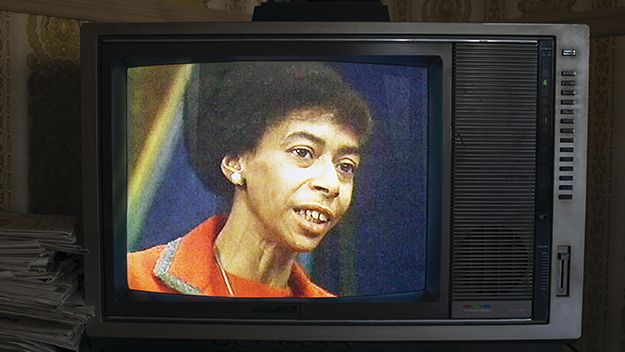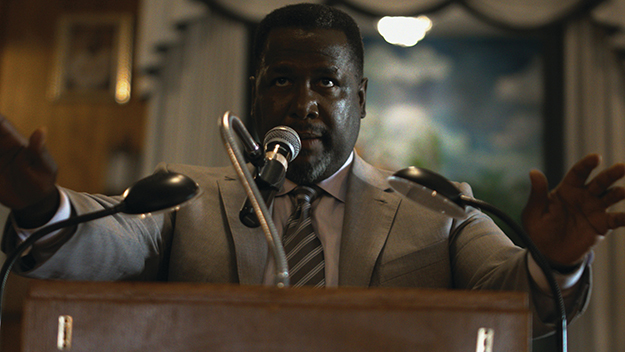Dispatch: 2019 Tribeca Film Festival

Gay Chorus Deep South (David Charles Rodrigues, 2019)
A sprawling social event that tries to provide something special for young, old, and millennials, the Tribeca Film Festival, in this time age of name changes, should consider taking film out of the title and re-dubbing itself Tribeca Expanded Cinema with Live Music/Dance/Conversations. Because that’s where the action has been in this festival for a decade. Films? Perhaps one or two memorable ones every year, and a handful of interesting ones that won’t make your 10 Best list, though you’re glad you saw them. But most of the entries are no competition for revival and repertory art programing around town, or if you want more mainstream fare, for the movies you can stream at home. The only truly exciting screenings at a festival which programmed 111 features and 63 short films were the combos, among them the screening of David Charles Rodrigues’s documentary Gay Chorus Deep South (the doc audience award winner) followed by a live performance by the singers we’d just seen on the screen.
That’s not to say there weren’t some pleasurable films, most of them documentaries. Abel Ferrara’s The Projectionist is a portrait of Nick Nicolaou, a Greek immigrant who fell in love with the community that movie theaters created even more than with particular movies themselves. It played in the small “This Used to Be New York” section, a heading that makes you wonder if the festival is aware of how it exploits nostalgia while based in one of the most affluent zip codes in the U.S. Beginning as a low-level manager during the heyday of independent movie screens, Nicolaou began buying theaters in the ’70s, staving off the predatory big chains and keeping the cash flow going with “adult” movies to supplement the box office for art and mainstream fare. He is now one of the only independent theater owners left in New York, and his hard-won success is the proof that communities of all kinds are bonded by the movies they share. Ferrara, who’s found a late groove with lively, unassuming documentaries about people and places he cherishes, clearly finds Nicolaou a kindred spirit. The Projectionist is not so much a hidden history of the movies as one that shines a light on an underground culture, fighting for survival, then and now.

Recorder: The Marion Stokes Project (Matt Wolf, 2019)
Balancing discretion with revelation, Matt Wolf’s Recorder: The Marion Stokes Project is an investigative portrait of a brilliant and obsessive collector. Stokes was an African-American librarian who joined the Communist party in the 1940s. A political activist, she believed in the power of television to shape people’s lives. On a Philadelphia weekly public affairs show, she met John Stokes, a wealthy, Main Line Philadelphian who shared her progressive politics and her passion for television. They divorced their respective spouses and married. Their three employees—a chauffeur, a building manager, and a nurse—are Wolf’s primary sources for personal information about the Stokes, who were devoted to each other but extremely reclusive. Marion bought a Betamax in 1975 and began taping broadcast television—sitcoms, educational programs. By the time CNN launched, she was using multiple VHS decks to record news programing 24/7. Her serious archiving was set in motion by the Iran hostage crisis, which she believed was manipulated by the CIA. When she died over 30 years later, she was sitting in a chair, watching the aftermath of the Newtown Public School shooting. She believed that people could learn the facts from television news and sift through them to find the truth. Her collection of some 70,000 VHS tapes is now housed at the Internet Archive in San Francisco. Unlike the Internet, where at least, theoretically nothing disappears, television networks regularly junked their videotape libraries. Stokes’s archive is not only large, it’s unique. And as Wolf’s documentary makes clear, she may have been an obsessive, but she understood the necessity of what she was doing. Recorder is a haunting portrait of a brilliant, driven, difficult outsider.
Two other strong documentaries, Nanfu Wang’s One Child Nation and Steven Bognar and Julia Reichert’s American Factory premiered at Sundance (I wrote about them then in these pages) and will be released in the near future. Amazon promises to put One Child Nation in theaters and American Factory will stream via the Obama imprint on Netflix. Useful and even necessary viewing for anyone with companion animals, Cindy Meehl’s The Dog Doc is an evenhanded, detailed look at the integrative veterinary practice of Dr. Marty Goldstein, who combines standard medicine with alternative therapies, often based on building the immune systems of his patients. Sometimes he succeeds in improving quality and length of life, sometimes he doesn’t. There are several associates in the practice that Dr. Goldstein founded. (One of them seems to specialize in cats, but in the film, the cats are only cutaways.)

Burning Cane (Phillip Youmans, 2019)
The grand prize for a fictional narrative was awarded to Phillip Youmans’s Burning Cane. The 19-year-old Youmans, who is currently a freshman in NYU’s film department, made the film during his last year of high school, a fact that made it almost impossible to see the film for itself. Set in impoverished rural Louisiana, Burning Cane centers on an alcoholic minister played by Wendell Pierce, who won the best actor award, and a middle-aged woman in his congregation who feels responsible for the minister as well as for the members of her blighted extended family. Without question, Youmans is courageous, hard-working, and committed to his vision. How much talent he has will be clearer when he stops trying to write like William Faulkner and use the camera like Claire Denis.
The incomparable Tribeca event was the premiere of Francis Ford Coppola’s Apocalypse Now: Final Cut, the third iteration of Coppola’s 1979 Apocalypse Now. (The second, Apocalypse Now: Redux, premiered at Cannes in 2001.) According to Coppola, the first version was too short, the second too long, so he gave it another shot. That it can never be a perfect film does not make is any less of a great one. It is amazing that as specific as it is to the insanity of the war in Vietnam, it speaks just as much to deeper, permanent American insanity—the one that is upon us now. The latest version has been digitally souped up—picture and sound both intensified. Which, in theory is fine, but like all digital restorations, it looks like a scan of the real thing—no depth, no weight, no texture. After the film, Coppola was interviewed on stage by Steven Soderbergh who asked him lots of questions about financing—basically how did the film get made with virtually no industry support. Coppola mentioned that Marlon Brando had been hired for three weeks at a million a week. Brando showed up massively overweight and for the first week, he just wanted to talk; since Coppola had enormous respect for Brando’s intelligence, he agreed. Soderbergh looked aghast that anyone would pay an actor a million bucks to chat. Another big expense was hiring a fleet of 26 army helicopters and deploying them to show how Americans swooped down and rained death on people, while looking straight in their eyes. Apocalypse Now is extraordinary because the technology Coppola used matched the technology of that war. Post Apocalypse Now, war movies would increasingly rely on CGI , just as today, thanks to digital weaponry, the military can take out a target from thousands of miles away. Apocalypse Now: Final Cut opens in August. I hope in at least one theater it will be projected on film.
Amy Taubin is a contributing editor to Film Comment and Artforum.







